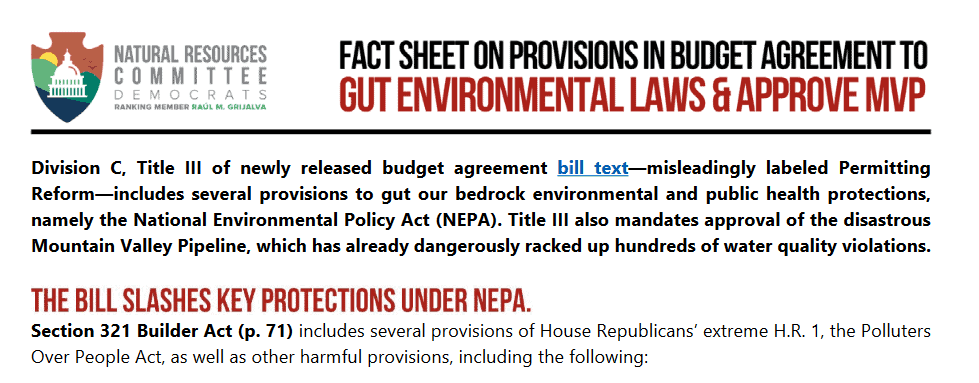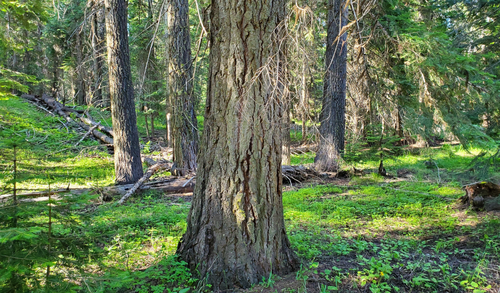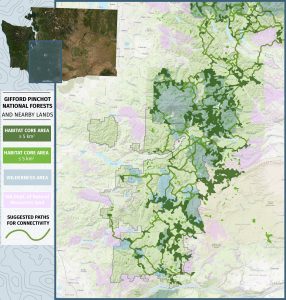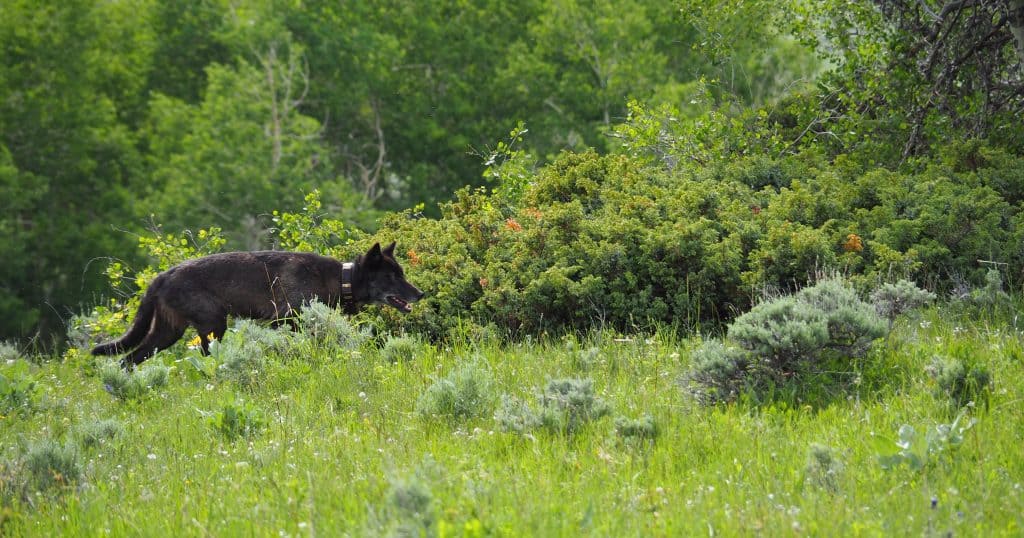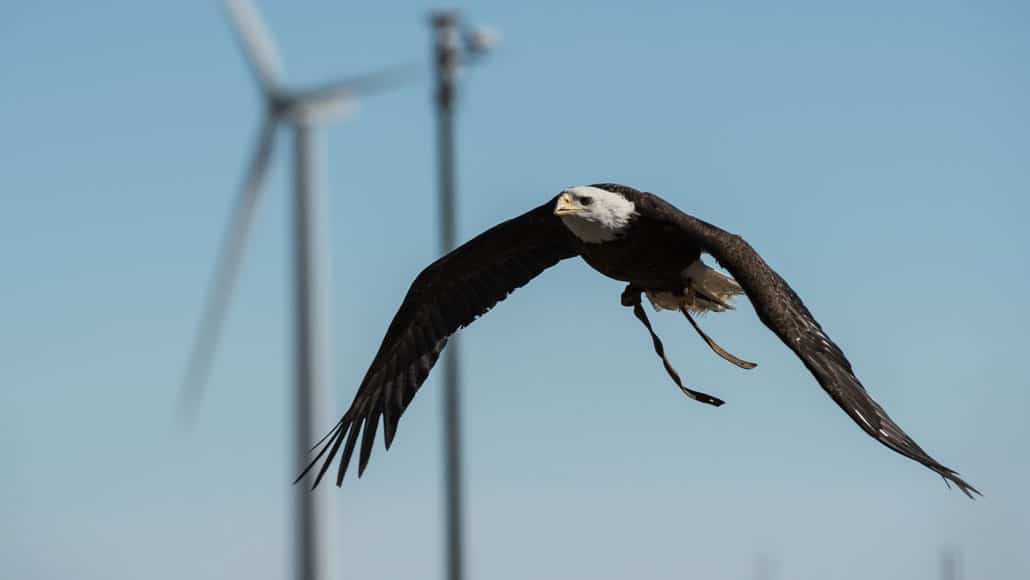This was going to be a “featured” case in a litigation summary post, but it turned out to be long enough for its own post. Besides, forest plan litigation is rare, especially Forest Service losses, and this case covers a number of NFMA and NEPA issues that are frequent topics on this blog. (And, full disclosure, I had something to do with it.)
- Court decision in Kettle Range Conservation Group v. U. S. Forest Service (E.D. Wash): Sanpoil clean
On the first day of summer, the district court vacated the decision for the Sanpoil Project on the Colville National Forest, and also vacated the relevant portions of the 2019 revised forest plan. The portions of the revised plan at issue replaced the Eastside Screens 21-inch diameter limit with a guideline to protect large trees, but included many exceptions. It also did not designate a minimum amount of old growth habitat to retain.
The court held that, “the agency failed to explain how the 2019 Forest Plan maintains the viability of old-growth-dependent species.” More specifically, “the agency erred by failing to demonstrate that its data and methodology reliably and accurately supported its conclusions about the viability of old-growth dependent species under each planning alternative, and depicted the amount and quality of habitat.” (Note that the Colville plan was revised under the 1982 planning regulations, which had somewhat different language describing wildlife viability. However, this court did not rule on substantive compliance with the NFMA requirement, but rather found a failure to demonstrate compliance due to an inadequate administrative record based on the APA.)
The Forest stated that the selected alternative, Alternative P, provided a “high” viability outcome for these species and that the no-action alternative would not improve viability outcomes. However, in the EIS, the data showed that “the No Action alternative provides more habitat than the selected alternative for three of the surrogate species,” and “creates the most late structure of any alternative.” The Forest relied instead on an appendix in an associated Wildlife Report that employed a Bayesian belief model to assign letter grades to viability, which supported the rationale for selecting Alternative P. The court explained:
Neither the EIS nor the Wildlife Report describe how the agency came to these scores for each species and action alternative. The agency did not define its methodology for assessing the letter grades, such as what factors it considered and the weight they were given. The grades assigned to each planning alternative lack explanation… the agency acted arbitrarily and capriciously when it offered explanations that ran counter to the evidence before the agency and failed to satisfy the requirements of the NFMA.
The court also found that the Forest failed to discuss the amount and quality of habitat and population trends (a requirement of the 1982 regulations).
The court also held that the forest plan EIS violated NEPA by failing to meaningfully address the original Eastside Screens Report. The Forest simply argued that it needed more flexibility to achieve the desired conditions, including avoiding numerous site-specific amendments to deviate from the diameter limit in the Eastside Screens. The Forest failed to include the original Eastside Screens Report in its administrative record, and did not adequately respond to public comments about the Eastside Screens. The court stated:
Its absence demonstrates that the agency failed consider the scientific rationale for adopting the 21-inch rule before deciding to discard it. The agency did not respond to viewpoints that directly challenged the scientific basis upon which the final EIS rests… In doing so, the agency violated the NEPA. The absence of the Eastside Screens Report also demonstrates that the agency did not consider an important aspect of the issue, as required by the APA.
… the agency did not consider negative impacts, if any, from (1) elimination of the 21-inch rule or (2) retention of the exceptions in the new guideline. The NEPA requires the agency to discuss and not improperly minimize negative effects of a proposed action… In this case, the EIS did not assess how often the new guideline’s exceptions will be invoked and how the exceptions may impact the agency’s conclusions about the environmental effects and species viability.”
The Sanpoil Project also violated NEPA. The EA simply assumed that the new forest plan guideline would protect old-growth trees. The court held:
This conclusion was contrary to the evidence. The Sanpoil Project EA did not specify the frequency of which the new guideline’s exceptions would be invoked, despite the 2019 Forest Plan’s stated objective of preserving old-growth trees. The agency is not required to catalogue specific trees that will be removed, but in this case, the agency was required to provide site-specific details at the project planning stage to provide a sufficient picture of the Sanpoil Project’s cumulative effects… Without sufficiently specific information about site impacts, the Sanpoil Project’s impact to old-growth trees and their dependent species is speculative.”
(This overlaps to some degree the issues surrounding “condition-based NEPA.” The court even cites the Forest Service Handbook: “If the Agency does not know where or when an activity will occur or if it will occur at all[,] then the effects of that action cannot be meaningfully evaluated.” It also is difficult to demonstrate consistency with the forest plan if the project documentation does not provide information about how a project is meeting forest plan requirements.)
The project also violated NEPA and NFMA by conducting “cursory analysis” of the effects of the project on gray wolves, wolverine, sensitive bat species, northern goshawk, and the western bumblebee. Finally, the court found that NEPA requires an EIS for the Sanpoil Project because it “creates uncertain risks to old-growth forests and the wildlife dependent on them, and “sets a precedent for future actions that utilize the new old-growth guideline, each of which may be individually insignificant, but create a cumulatively significant impact when applying the new guideline.” Moreover, the lack of quantified or detailed information about the Sanpoil Project’s impacts in this respect “is also highly controversial due to the same questions about its size and nature and effect of the action on old-growth dependent species.”
The court found that this “case” was ripe for judicial review “when the agency issued RODs for both agency actions” “because the Sanpoil Project is a site-specific action governed by the 2019 Forest Plan.” The plaintiff had argued that forest plan decision challenge was ripe because it dealt with a forest-wide viability requirement rather than timber sale requirements found not ripe by the Supreme Court in its Ohio Forestry decision. However, the plaintiff also argued that ripeness of forest plan issues could be based on this project decision implementing the plan. It is not completely clear which rationale the court is employing. The court also found that the plaintiff had exhausted administrative remedies by identifying large, old trees, wildlife viability and the Eastside Screens “thoroughly and consistently during the public comment process.”

